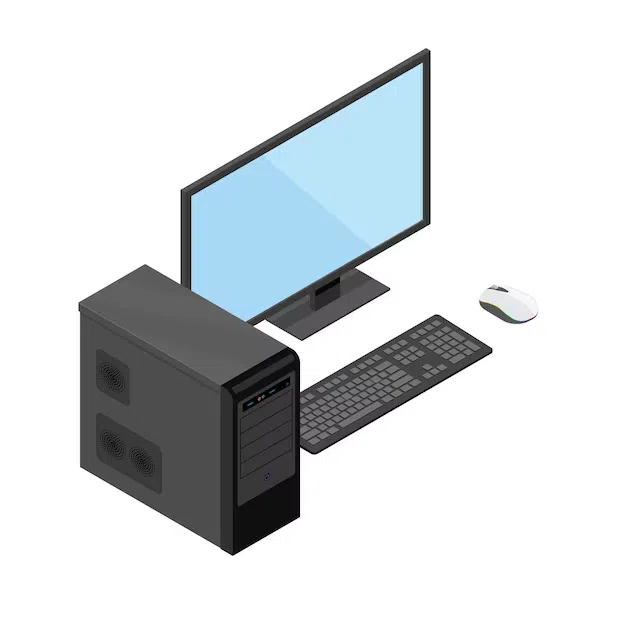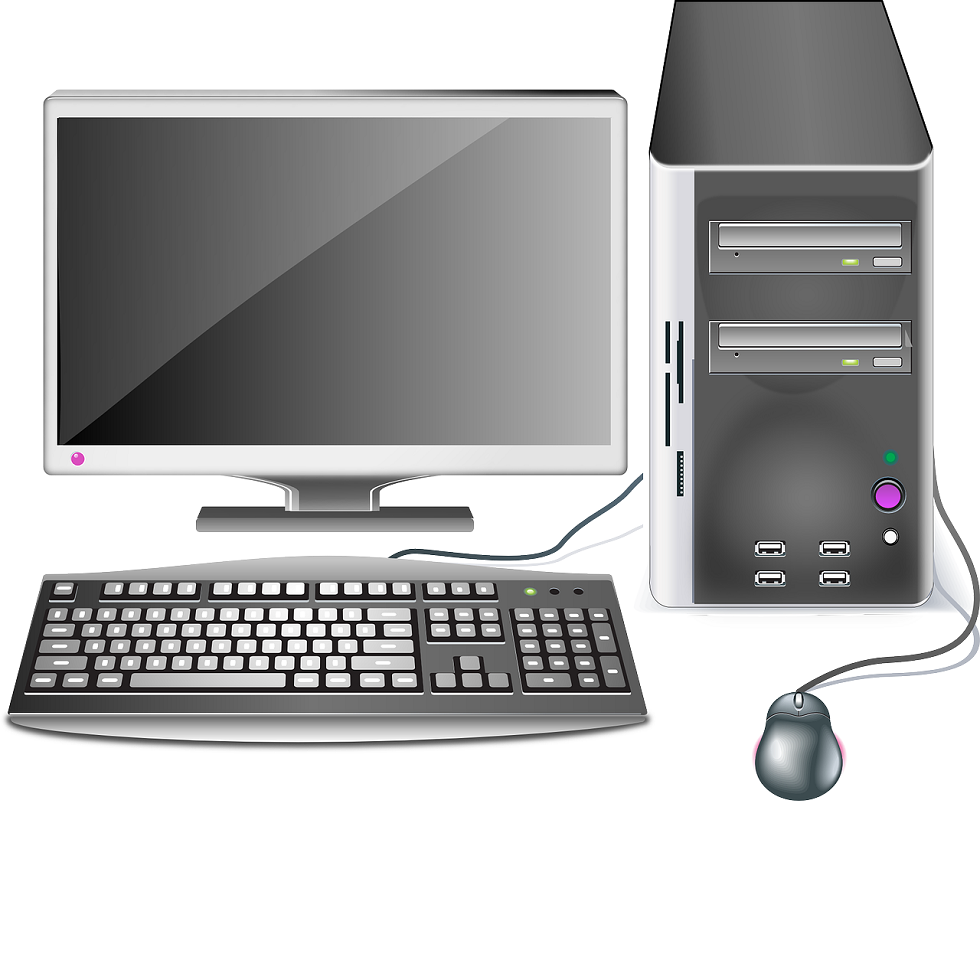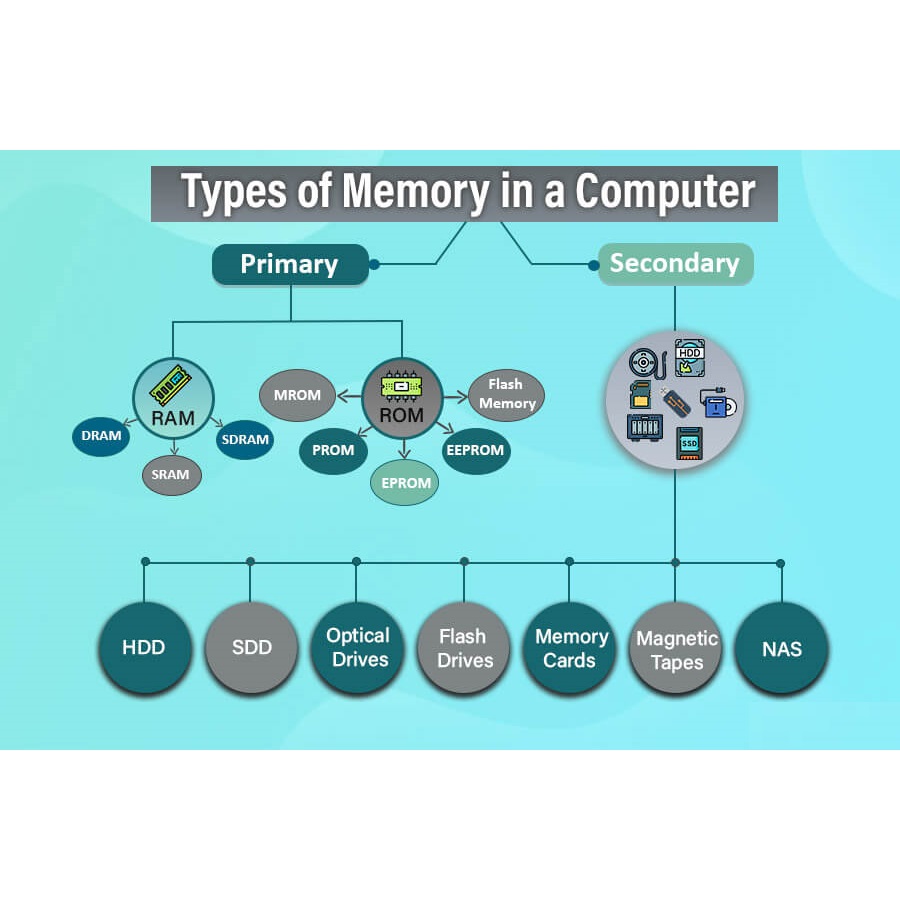Introduction of Computer Types
Computers have become integral components of our daily lives, serving different purposes based on the specific computer types. The diversity in computer types is vast, with each designed and engineered to perform unique tasks or cater to particular user needs. This expansive guide delves into the primary categories of computers, the evolution of these devices, and applications that define their usage.
Personal Computers
Desktop Computers
Desktop computers are perhaps the most recognizable computer types, traditionally used in homes and offices. These systems usually encompass a separate monitor, keyboard, mouse, and CPU unit, offering significant processing power and storage capacity. Desktops are favored for their upgradeability; users can easily swap out components such as RAM, graphics cards, and storage drives.
The history of desktop computers can be traced back to the 1970s, with systems like the Apple II and IBM PC leading the revolution. Over decades, advancements in technology have drastically reduced the size of components, allowing for more powerful and compact desktops. The primary benefit of desktop computers lies in their ability to provide high performance and longevity at a relative cost.
Modern desktop computers come in several forms, from the traditional tower designs to all-in-one systems where the monitor and CPU are housed in a single unit. Despite the growing popularity of portable devices, desktops remain essential tools for professionals who need powerful computing resources. Graphic designers, video editors, gamers, and software developers are just a few examples of users who benefit from the high performance that desktops offer.
Laptops
Laptops, or notebook computers, deliver portability without sacrificing too much performance. Their compact design includes an integrated screen, keyboard, and trackpad, making them easy to carry around. The evolution of laptops can be seen in the shift from bulky and heavy systems to sleek, lightweight designs with powerful components.
Laptops cater to a wide range of users. Students, business professionals, and travelers often rely on laptops for their mobility and functionality. The advent of powerful yet efficient processors and longer-lasting batteries has made laptops a practical replacement for many desktop users. Modern laptops come equipped with high-resolution displays, SSDs for quick data access, and a range of ports for connectivity.
While laptops typically don’t offer the same level of upgradeability as desktops, advancements in technology have eventually minimized this downside by enhancing the out-of-the-box performance. Gaming laptops, for instance, now come with dedicated graphics cards and robust cooling systems, catering to gamers who prefer a mobile solution. Similarly, Ultrabooks offer a balance between performance and portability, making them popular among business professionals.
Tablets
Tablets are lightweight, portable computers that utilize touchscreens for user input. Originally introduced as a niche product, tablets have gained mainstream popularity due to their ease of use and convenience. Apple’s iPad was a groundbreaking product that demonstrated the potential of this device category, followed by a variety of tablets running Android and Windows operating systems.
Tablets appeal to users who need a portable device for casual browsing, media consumption, and light productivity tasks. They are particularly useful for reading eBooks, watching videos, and browsing the web. The inclusion of features like digital stylus support has made tablets a favored tool among artists and designers. Notably, 2-in-1 tablets like the Microsoft Surface Pro offer a blend of tablet portability and laptop functionality, featuring detachable keyboards and compatibility with productivity software.
Despite their smaller size and lower processing power compared to laptops and desktops, tablets have found a niche market. Parents often prefer them for educational purposes for children, while they also serve as efficient tools in retail, healthcare, and other industries where mobility is crucial. The ongoing improvements in processor and battery technology ensure that tablets remain a relevant and popular choice among a diverse user base.
Workstation Computers
Professional Workstations
Professional workstations are high-performance systems designed to handle demanding computational tasks. Whether used for 3D rendering, scientific simulations, or software development, these computers offer superior capabilities in terms of processing power, memory, and graphics performance. They are often equipped with advanced CPUs, large amounts of RAM, and high-end GPUs to manage resource-intensive applications.
Professional workstations are essential tools for graphic designers, animators, engineers, architects, and scientists. Companies like Dell, HP, and Apple offer workstations tailored to these professional needs. For instance, Apple’s Mac Pro is renowned for its robust performance and sleek design, catering to professionals in the creative industry. On the other hand, workstations from Dell’s Precision series provide scalable performance and are highly customizable.
The importance of workstations extends beyond their hardware. These computers often come with specialized software and support for industry-specific applications. For example, AutoCAD for architects and engineers, Adobe Creative Suite for designers, and MATLAB for scientists are all optimized to run efficiently on workstation computers. The reliability and speed of professional workstations make them indispensable in environments where downtimes can lead to significant productivity losses.
Server Computers
Server computers serve as the backbone of vast networks, providing shared resources, data management, and application services. Unlike personal or workstation computers, servers are designed to operate continuously, handling multiple requests simultaneously from numerous clients. They come equipped with powerful processors, extensive memory, and high-reliability components to ensure minimal downtime.
Servers are crucial in varied sectors, from small businesses to large enterprises. In smaller setups, a single server might manage emails, storage, and networking tasks. In larger environments, server farms or data centers with numerous specialized servers handle vast amounts of data and applications. Microsoft SQL Server, Oracle’s database server, and Apache web server are examples of server software that these machines operate.
The design of server computers emphasizes durability and scalability. Redundant power supplies, error-correcting memory, and hot-swappable components are standard features to ensure long-term operation. As businesses increasingly move towards cloud computing, servers continue to play a critical role, both on-premise and within data centers operated by cloud service providers like AWS, Microsoft Azure, and Google Cloud.
Mainframe Computers
Traditional Mainframes
Mainframe computers have been a foundation of enterprise computing for decades. These massive machines, known for their reliability and high processing power, manage complex and mission-critical applications for large organizations. Industries such as finance, healthcare, and manufacturing depend on mainframes for tasks such as transaction processing, database management, and bulk data processing.
Mainframes stand out due to their ability to process vast amounts of data and support thousands of users simultaneously. IBM, a leader in mainframe technology, offers systems like the IBM Z series, which provide unparalleled speed and reliability. Mainframes often operate in environments that necessitate absolute reliability and security. For example, they are integral in processing millions of banking transactions daily.
The architecture of mainframes focuses on maximizing uptime, with redundant components and sophisticated error-detection mechanisms. Despite the rise of distributed computing and cloud services, mainframes remain pertinent due to their unmatched ability in handling large-scale processing efficiently.
Modern Mainframes
Modern mainframes have evolved to integrate with contemporary technologies, including cloud computing and artificial intelligence. These advancements allow mainframes to remain relevant in an era dominated by distributed systems. Newer mainframe models are equipped with enhanced processing capabilities, improved scalability, and efficient integration with modern IT infrastructure.
One significant innovation in modern mainframes is their ability to support hybrid cloud environments. This capability allows organizations to leverage the power of mainframes for critical processes while utilizing cloud resources for other applications. The flexibility offered by modern mainframes enables businesses to optimize their IT infrastructure and maximize efficiency.
Additionally, advancements in mainframe technology have improved their energy efficiency and reduced their overall footprint. This evolution makes mainframes not only a viable option for large enterprises but also for medium-sized businesses that require reliable and scalable computing solutions. The future of mainframes seems promising, with continued innovation ensuring they remain integral parts of enterprise IT strategies.
Supercomputers
Traditional Supercomputers
Supercomputers represent the pinnacle of computing performance, designed to perform complex calculations at unprecedented speeds. These machines are utilized in fields requiring significant computational power, including weather forecasting, scientific research, and simulations. Supercomputers consist of thousands of processors working in parallel, enabling them to perform trillions of calculations per second.
One famous example is IBM’s Blue Gene, which significantly contributed to scientific research with its colossal processing capabilities. Supercomputers help scientists create accurate climate models, understand seismic activities, and explore space. They are also pivotal in genome research, facilitating advancements in medicine and biology.
The architecture of supercomputers emphasizes speed and efficiency, with high-speed interconnects linking processors and enabling fast data exchange. Cooling and energy consumption are critical considerations in supercomputer design, as these machines generate substantial heat due to intense processing activities. The cost of supercomputers is considerable, often running into hundreds of millions of dollars, but their benefits in advancing science and technology are invaluable.
Modern Supercomputers
Modern supercomputers have continued to evolve, incorporating new technologies to amplify their performance and efficiency. One significant trend is the integration of graphics processing units (GPUs) alongside traditional CPUs, significantly boosting computational capabilities. GPUs, initially designed for rendering graphics, excel at handling parallel processing tasks, making them ideal for supercomputing applications.
The fastest supercomputers today, such as Japan’s Fugaku, are capable of performing quadrillions of calculations per second. They are employed in cutting-edge research, including exploring quantum mechanics, developing artificial intelligence, and advancing materials science. The scalability and modularity of modern supercomputers allow researchers to tailor these machines to specific computational tasks, enhancing their versatility.
Moreover, advancements in quantum computing hold promise for the future of supercomputing. Quantum computers utilize the principles of quantum mechanics to perform calculations at astonishing speeds, potentially revolutionizing fields that rely on supercomputers. Although still in the experimental stage, quantum computing represents the next frontier in high-performance computing, with the potential to solve problems deemed intractable by classical supercomputers.
Embedded Systems
Purpose and Applications
Embedded computer types systems are specialized computing systems designed to perform dedicated functions within a larger system. These systems are ubiquitous in modern technology, found in everyday devices such as smartphones, home appliances, automotive electronics, and industrial machines. Embedded systems are typically composed of microcontrollers or microprocessors, memory, and input/output interfaces, all tailored for specific tasks.
The primary purpose of embedded systems is to provide control, monitoring, and automation functions, enhancing the functionality and efficiency of devices. For instance, in automotive applications, embedded systems manage engine control, braking systems, and infotainment. In consumer electronics, they control everything from washing machines to smart thermostats.
Embedded systems are characterized by their small size, low power consumption, and real-time performance. They are designed to operate with minimal user interaction, often performing tasks autonomously. The development of embedded systems involves a combination of hardware and software engineering, with a focus on optimizing resource utilization and ensuring reliability in various operating conditions.
Challenges and Advancements
The design and development of embedded systems present unique challenges, including constraints on power, memory, and processing capabilities. Engineers must balance these constraints while ensuring the system meets specific performance requirements. Additionally, embedded systems often operate in harsh environments, necessitating robust designs capable of withstanding temperature variations, vibrations, and other stress factors.
Advancements in embedded system technology have led to more powerful and efficient solutions. The development of system-on-chip (SoC) technology, which integrates all components into a single chip, has revolutionized embedded systems, enabling more compact and cost-effective designs. Additionally, advancements in wireless communication and sensor technology have expanded the applications of embedded systems, driving the growth of the Internet of Things (IoT).
The future of embedded systems lies in the continued integration of advanced technologies, such as artificial intelligence and machine learning. Incorporating these technologies enables embedded systems to perform more complex tasks, adapt to changing environments, and improve overall efficiency. As technology advances, embedded systems will continue to play a pivotal role in the innovation and development of smart, connected devices.
Conclusion of Computer Types
The diversity in computer types underscores the versatility of computing technology in addressing varying needs and applications. From personal computers catering to individual users to supercomputers performing groundbreaking scientific research, each computer types plays a critical role in our modern world. Understanding the unique features and capabilities of these different computers types enables users to select the appropriate solutions for their specific requirements, driving innovation and efficiency across industries. As technology continues to evolve, the development of new and advanced computing systems will undoubtedly further transform our world, enabling unprecedented advancements and creating new opportunities for growth and discovery.



